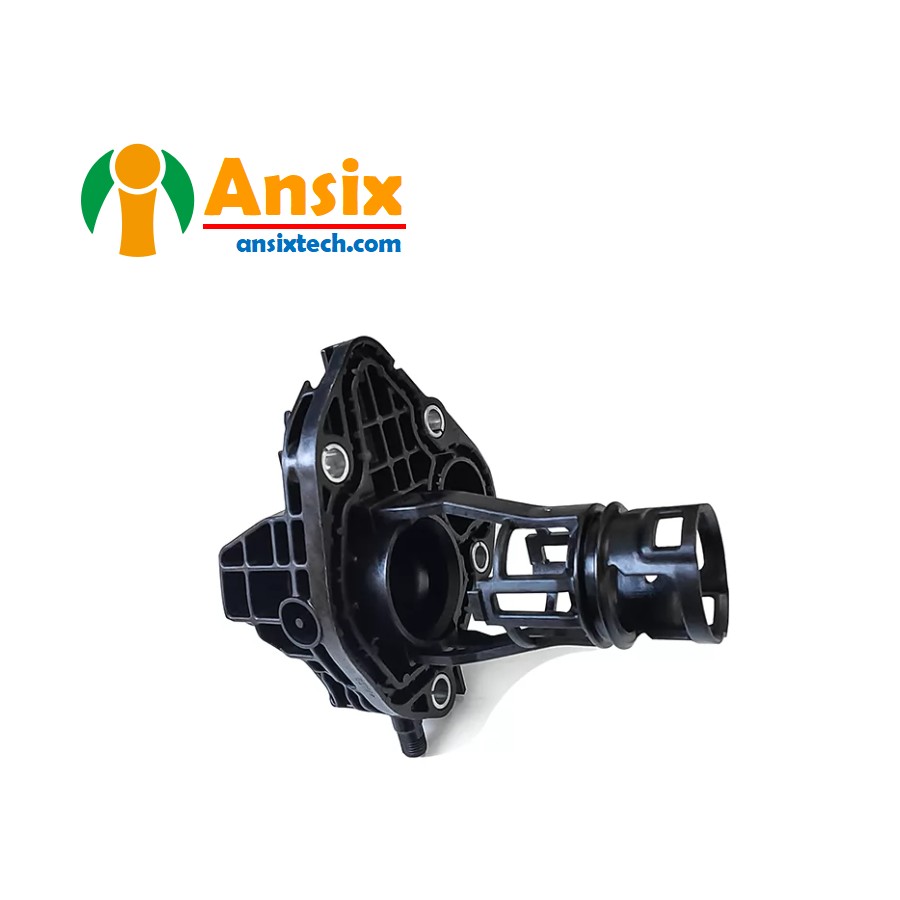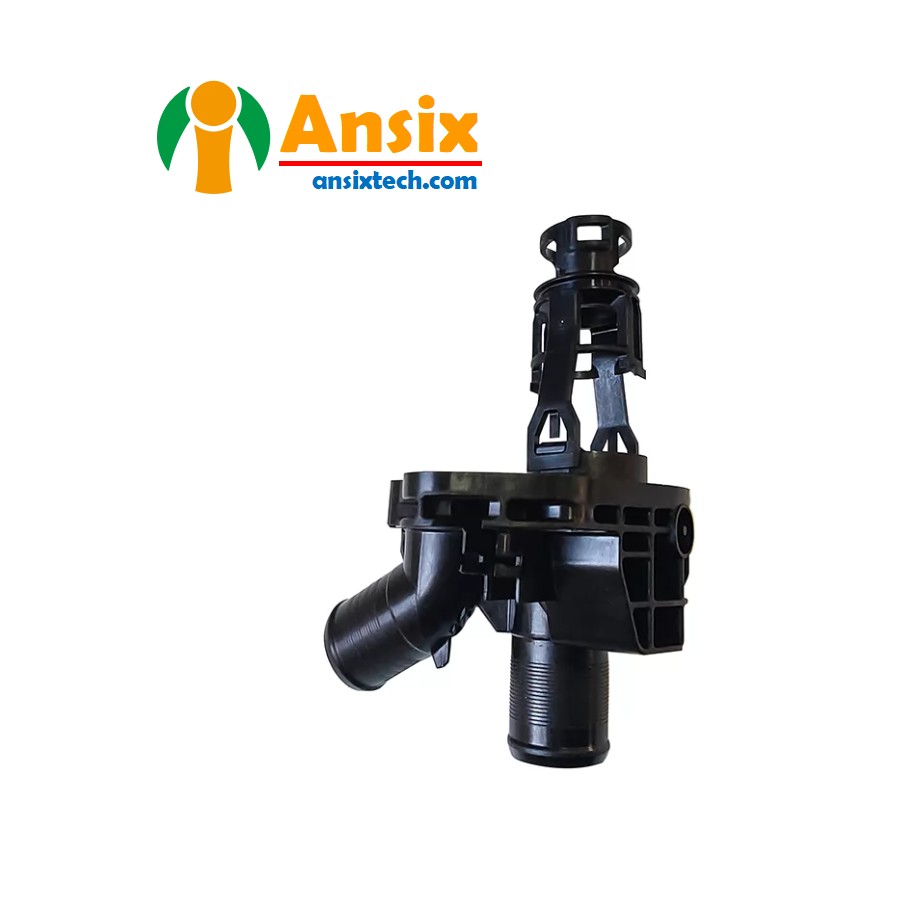Automobile Thermostat Pump Body Injection mold
FEATURES

- Automobile Thermostat Pump Body Injection mold
Maintenance and maintenance: Regular maintenance and upkeep of injection molds, including cleaning, lubrication, replacement of worn parts, etc., to ensure long-term use of the mold.The manufacturing of automobile thermostat pump body injection molds needs to take into account the shape, size, material properties and other factors of the pump body. At the same time, it is also necessary to design an appropriate mold structure and cooling system according to the requirements of the injection molding process to ensure the quality and efficiency of injection molding. The manufacturing of injection molds requires experienced engineers and technicians to ensure the accuracy and stability of the mold.Please send us a message(Email: info@ansixtech.com ) at any time and our team will reply to you within 12 hours.
-
Mold Description
Product Materials:
PA66+GF30
Mold Material:
S136H
Number of Cavities:
1*1
Glue Feeding Method:
Hot runner
Cooling Method:
Water cooling
Molding Cycle
23.5s
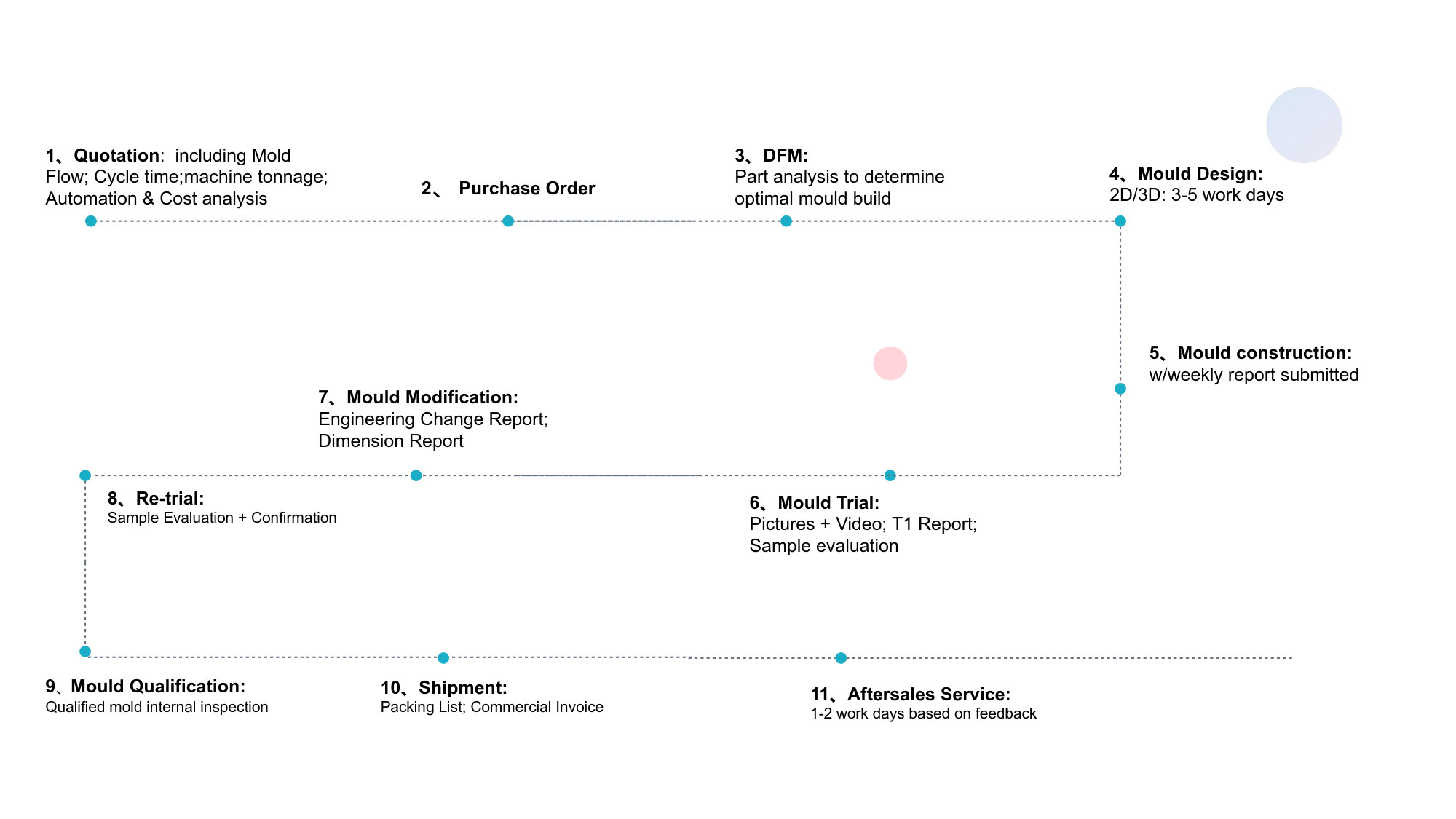
- Automobile Thermostat Pump Body Mold flow analysis and mold designThe design and mold flow analysis of the automotive thermostat pump body mold are very important links in the manufacturing of automotive thermostat pump bodies.Design of automobile thermostat pump body mold:a. Collect relevant information about the car thermostat pump body, including size, shape, material, etc.b. According to the design requirements of the pump body, design the mold, including mold cavity, mold core, demoulding system, cooling system, etc.c. Ensure that the accuracy and size of the mold meet the requirements to ensure the quality and stability of the pump body.d. Use CAD software for mold design and generate three-dimensional models and engineering drawings of the mold.Mold flow analysis of automobile thermostat pump body mold:a. Use mold flow analysis software to import the CAD model of the automobile thermostat pump body, and set the injection molding process parameters, such as injection speed, temperature, pressure, etc.b. Conduct mold flow analysis to simulate the melt flow, filling, cooling and other processes during the injection molding process to evaluate the filling performance of the pump body, defects such as bubbles and short shots, and optimize the injection molding process parameters.During the mold design and mold flow analysis process, you need to pay attention to the following points:Ensure filling performance: Through mold flow analysis, the injection molding process parameters are optimized to ensure good filling performance and avoid defects.Design of cooling system: Reasonably design the cooling system to ensure good cooling effect during the injection molding process and improve production efficiency and product quality.Design of demoulding system: According to the shape and requirements of the pump body, design a suitable demoulding system to ensure that the pump body can be demoulded smoothly and avoid damage and deformation.Injection molding sequence and injection point location: Determine the injection sequence and injection point location to ensure that the plastic material can fully fill the mold cavity and avoid voids and defects.The design and mold flow analysis of the automotive thermostat pump body mold require mold design, optimization of injection molding process parameters, and mold flow analysis. Through reasonable design and control, high-quality automotive thermostat pump bodies can be obtained.
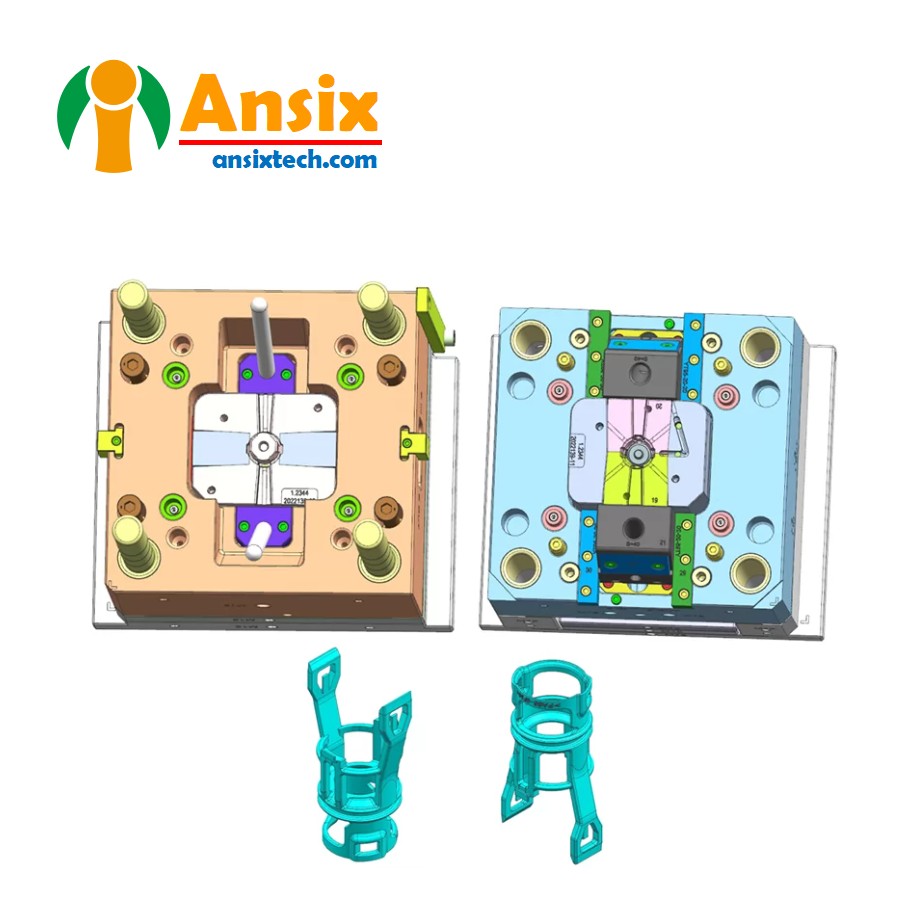
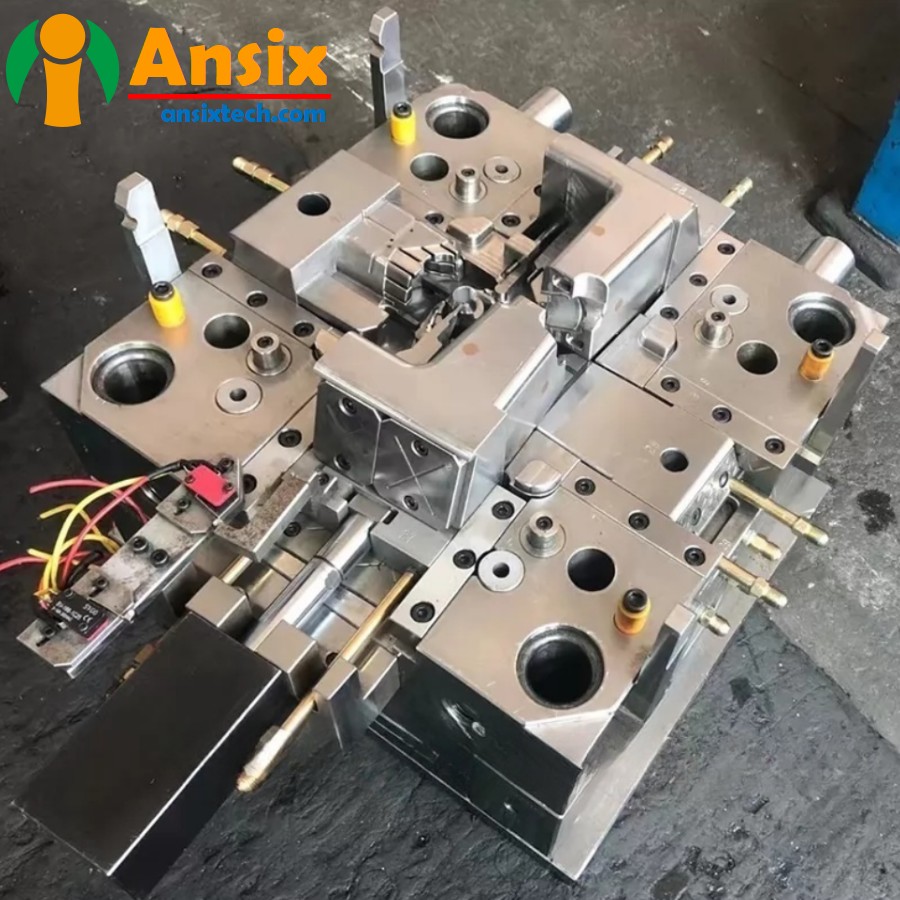
- Automobile Thermostat Pump Body of the mold manufacturing process and product material selectionThe processing of automobile thermostat pump body molds and the selection of injection molding materials are very important links in the manufacturing of automobile thermostat pump bodies. The following will introduce the processing of automobile thermostat pump body molds and the selection of injection molding materials PA66+GF30%.Processing of automobile thermostat pump body mold:a. According to the mold design, select the appropriate processing technology and equipment, such as CNC machining center, EDM machine, etc.b. Process mold parts, including mold cavity, mold core, demoulding system, cooling system, etc. Ensure that the processing accuracy and size meet the requirements.c. Assemble the mold parts to ensure accurate fit and adjustment of the parts and ensure the stability and reliability of the mold.Injection molding material selection:a. Select the appropriate injection molding material according to the requirements of the automobile thermostat pump body. Commonly used injection molding materials include PA66, PA6, PBT, etc.b. Considering the working environment and requirements of the pump body, select injection molding materials with good mechanical properties, high temperature resistance, chemical resistance and wear resistance.c. PA66+GF30% is a reinforced PA66 material with 30% glass fiber reinforcement added. It has higher strength and rigidity and is suitable for manufacturing automobile thermostat pump bodies that require high strength and rigidity.During the automotive thermostat pump body mold processing and injection molding material selection process, you need to pay attention to the following points:Processing accuracy and size control: Ensure that the processing accuracy and size of mold parts meet the requirements to ensure the quality and stability of injection molding.Surface treatment of the mold: According to the requirements of the pump body, carry out appropriate surface treatment, such as grinding, polishing, etc., to improve the surface quality and smoothness of the pump body.Control of injection molding process parameters: According to the characteristics of the injection molding material, reasonably design and control the injection molding process parameters to ensure that the filling performance and curing effect of the material meet the requirements.Material selection and certification: Select injection molding materials that meet relevant standards and certification requirements to ensure product safety and hygiene.The processing of automobile thermostat pump body molds and the selection of injection molding materials require the selection of appropriate processing techniques and equipment to ensure processing accuracy and dimensional control. In terms of injection molding material selection, according to the product requirements and use environment, choose injection molding materials with good mechanical properties, high temperature resistance, chemical resistance and wear resistance, such as PA66+GF30%. Through reasonable processing and control of injection molding process parameters, high-quality automotive thermostat pump bodies can be achieved.
- Automobile Thermostat Pump Body Mass production and Quality controlInjection molding of automobile thermostat pump body involves some difficulties, including process, production efficiency, tooling, cost and quality assurance.Difficulties in injection molding:a. Complex geometry: Automotive thermostat pump bodies usually have complex geometries, and factors such as filling performance, cooling effect, and demoulding difficulty need to be considered during injection molding.b. Thin-walled structure: The thermostat pump body usually has a thin-walled structure, and the injection molding process parameters need to be controlled during the injection molding process to avoid problems such as short shots, warping, and deformation.c. High precision requirements: The thermostat pump body has high dimensional precision requirements, and injection molding process parameters and mold processing accuracy need to be controlled to ensure product quality and consistency.Process and production efficiency:a. Injection molding process parameter optimization: Through mold flow analysis and actual production debugging, injection molding process parameters are optimized to improve filling performance, cooling effect and demoulding performance, and improve production efficiency.b. Automated production: Use automated injection molding machines and robot systems to achieve automated production, improve production efficiency and reduce labor costs.c. Multi-cavity molds and multi-machine production: Use multi-cavity molds and multiple injection molding machines for simultaneous production to increase output and production efficiency.Tooling and cost:a. Reasonable design of tooling fixtures: According to the shape and requirements of the thermostat pump body, design appropriate tooling fixtures to ensure the fixation and positioning of injection molded parts and improve production efficiency and quality stability.b. Control costs: During the mold manufacturing and injection molding production process, reasonably control material costs, processing costs and labor costs to reduce production costs.Quality assurance:a. Establish a complete quality control system: including quality inspection, process control and defective product handling to ensure that products meet quality standards.b. Conduct inspections and tests on product appearance quality, dimensional accuracy, physical properties, etc. to ensure product quality and consistency.c. Continuous improvement: Regularly evaluate and analyze the production process, find opportunities for improvement, optimize production processes and processes, and improve product quality and production efficiency.In the injection molding process of automobile thermostat pump body, factors such as process optimization, production efficiency, tooling design, cost control and quality assurance need to be comprehensively considered. Through reasonable process optimization, automated production, appropriate tooling design, cost control and the establishment of a quality assurance system, high-efficiency, high-quality automotive thermostat pump body injection molding can be achieved.


